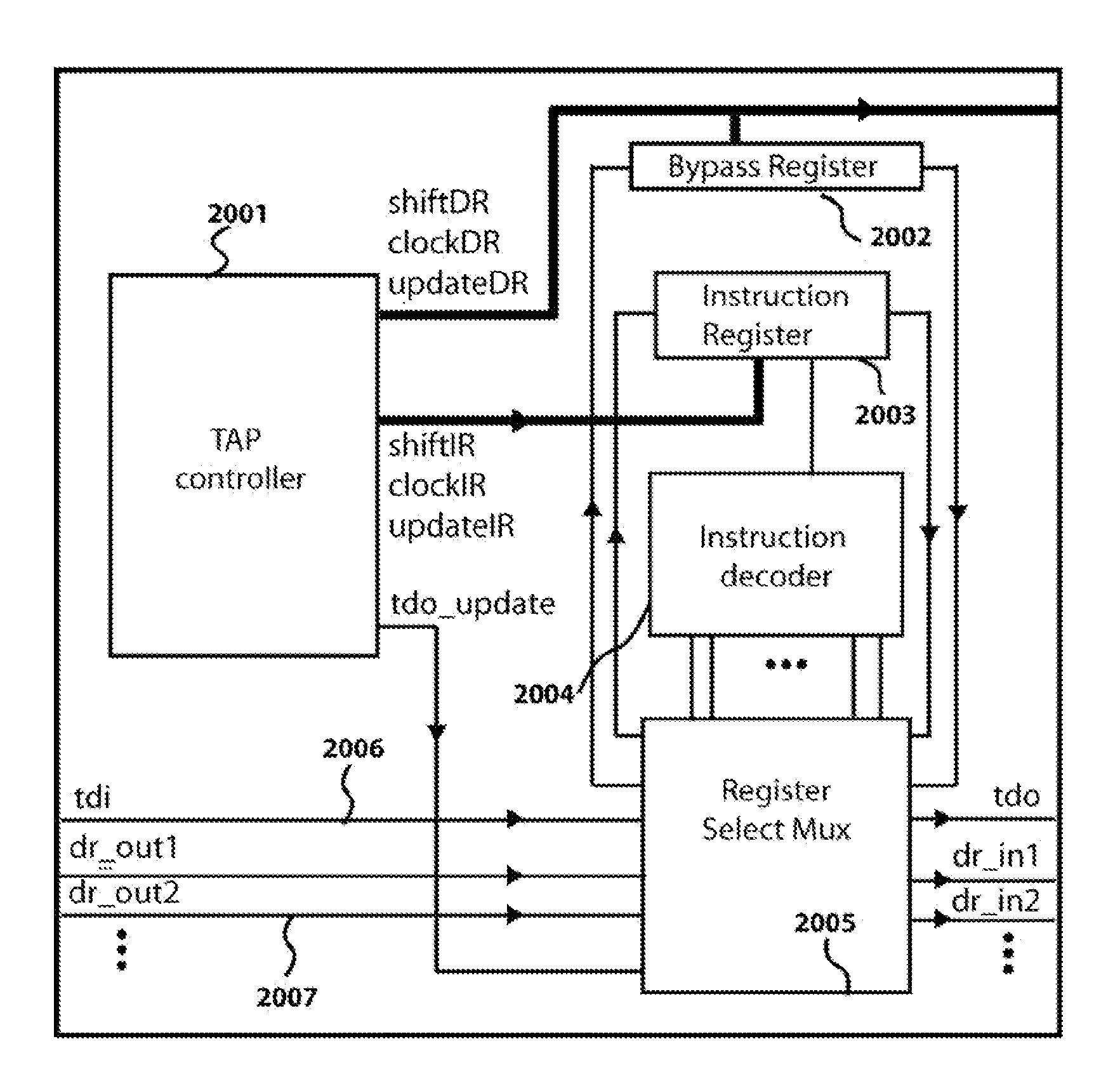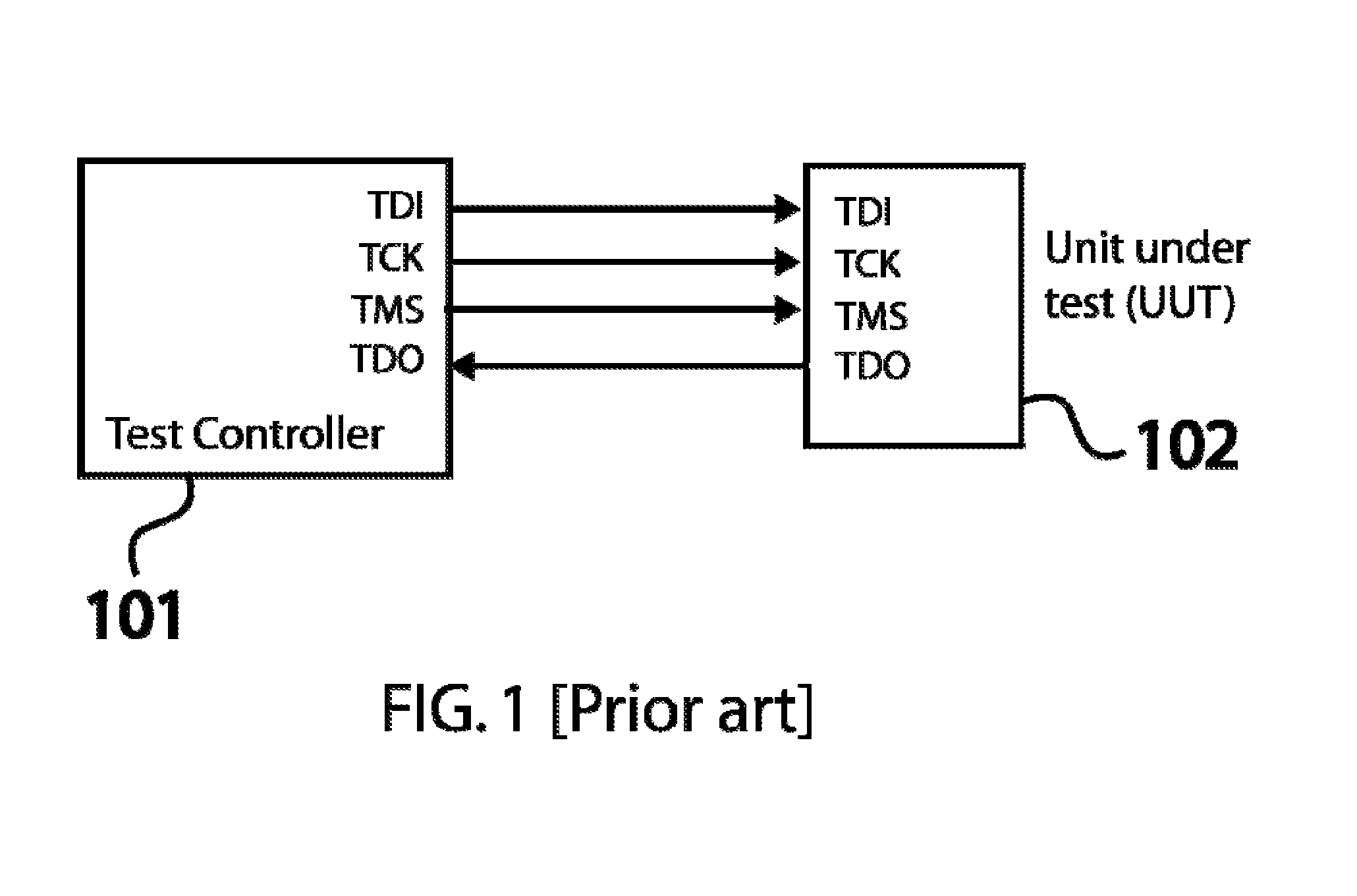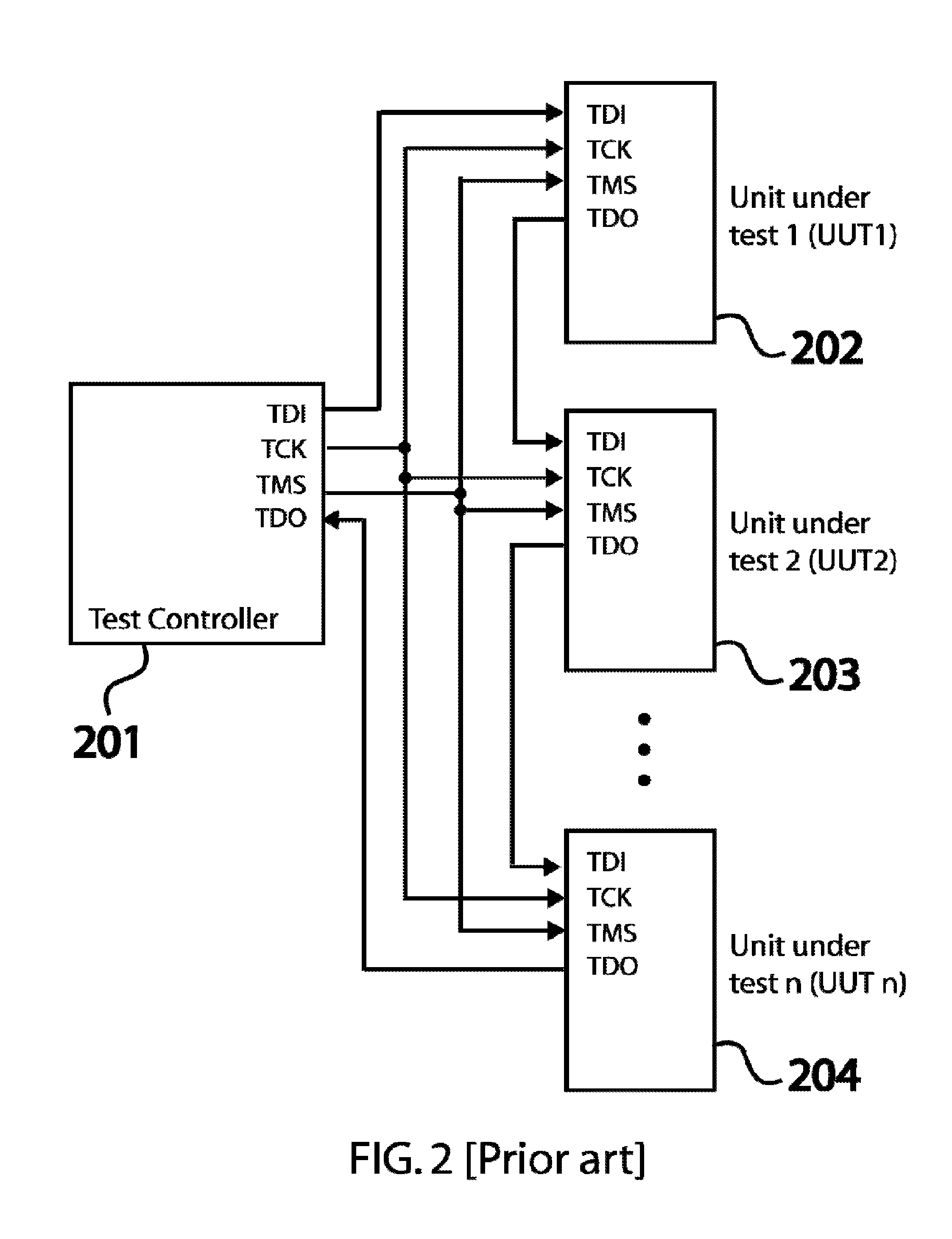The size of an
integrated circuit (IC) increases not only its cost, but also the probability that manufacturing defects appear on its surface.
Not all defects cause dramatic global failure on the entire IC.
Some defects are benign; some generates various faults such as opens, shorts, stuck-at-one, stuck-at-zero.
Even for mature
microfabrication processes, manufacturing defects significantly reduce the yield of large functional ICs.
Defects appear randomly on a LAIC, and most of the time they cannot be detected by
visual inspection, so it is impossible to know where defects are located by means other than
electrical testing.
But the daisy-chained UUTs have a major
vulnerability: if only one UUT in the ring is dysfunctional, the whole ring is not testable and not configurable, so the whole
system becomes non-functional.
But this solution requires an addressable multi-dropout module resulting in an increase of IC's area consumption.
If the multi-dropout
bus contains a
single fault, the whole PCB or IC is dysfunctional.
The loss of a large and dense
system due to failure of the test hardware can be very expensive and can
impact its profitability.
By default, LAICs produced with advanced
semiconductor manufacturing are complex systems in which multiple defects are expected with a
high probability.
This is complex to implement and it usually demands redesigning logic cells using full-custom circuit
layout.
The main limitations with these relatively generic prior art solutions are the test time and diagnosis resolution.
Test phase B is able to detect shorts and SA faults, but fails to locate precisely the SA fault.
It is known from previous work that the basic walking one approach is too slow to test and diagnose
large networks.
Fault tolerance (or defect tolerance) becomes an unavoidable topic as the scale of ICs is decreasing toward the physical limits of the photolithographic process.
Furthermore, the increasing interest in
wafer scale packaging and
wafer scale integration system make defect tolerance a very important design issue to improve production yields.
Designers working on 3D
chip architectures face the major problem of increased
power density.
High temperatures create problems such as frequency throttling, increased
noise, decreased
chip life expectancy and degraded
chip reliability.
Another problem created by heat appears in LAICs.
If the gradients are too large, it could result in breaking the
silicon substrate and permanently damaging the system.
Stacked
layers are very densely interconnected making observation of 3D interconnects very difficult.
Efficient and standardized tests of 3D stacked ICs are difficult to achieve.
Furthermore, for the same reason, it is harder to diagnose faults in 3D stacked IC for devices being prototyped and devices under validation.
But no existing system can program assertions in dedicated hardware inserted in a programmable
interposer.
At-speed
observability and
controllability of 3D stacked chips is hard to achieve because interconnects could be buried in the core of the 3D stacked chips.
Therefore, the increased
miniaturization of the 3D stacked chips makes at-speed DFT harder to achieve.
No previous system offers the possibility to observe all the digital pins of all chips in the system.
BIST is extensively used in industry, but no existing
interposer offers the possibility to program a BIST for
rapid prototyping of DFT in 3D stacked chips.
To diagnose problems encountered in some
system under test, it is desirable to implement a BIST specialized for diagnosis; however, no existing interposer can configure an embedded BIST circuit dedicated to diagnosis of 3D stacked chips.
Furthermore, one of the most important challenges is to invest resources on research to develop new technologies that can make easier an evolution towards a more sustainable society.
However, the standard does not provide specific DPM methods to improve energy efficiency.
When
workload statistical behavior is changing over the time, the accuracy of the wake-up and shut-down predictions is directly compromised.
No existing method can capture data coming from the
software and from any digital pin of the system to learn from the past
workload because having
observability on every pin of every system component has never been done before.
The existing DPM policies are very basic due to the complexity of the problem.
DTM pro-actively reacts to predicted thermal crisis by using scheduling algorithms, but inevitably with performance degradation.
A solution to propagate a differential
signal on a LAIC has already been proposed [24], however, such approach does not offer spatial reconfiguration as needed by the system.
Dissymmetry induces
jitter between the two differential signals and can lead to loss of the transmitted information.
Very stringent
jitter constraints exist for most high-speed interfaces.
This very short
propagation time difference can be caused by slight length or load dissymmetry between paired
signal paths.
Because these structures are made of materials that have different properties, specifically different coefficients of
thermal expansion (CTEs), thermal stresses,
distortion and warping are a source of concern.
A main reliability challenge is to ensure transient thermo-
mechanical stability in LAIC systems due to the multiple embedded heat sources and the presence heterogeneous materials assembled in a multi-layer structure.
Typically, different materials will tend to have mismatches in Thermal Coefficients of Expansion (TCEs).
Heat expansion and contraction due to circuits operating can result in buckling and
cracking of a LAIC system, particularly a full-wafer LAIC if attached to a rigid substrate.
Performing experiments to measure or predict the stress and temperature generated in the multilevel devices using some finite
element analysis tool is costly,
time consuming and device dependant.
Transient thermo-mechanical stress issues are critical for large ICs industry.
Thermal expansion and contraction due to the circuits performing normal operations can result in localized peak stress and
cracking of the device, particularly in LAIC systems if they are supported or fixed to a rigid substrate or if such systems are insufficiently cooled.
These techniques, though helpful to reduce the overall
power consumption, may cause significant on-chip thermal gradients and local hot spots due to different
clock /
power gating activities and varying
voltage scaling.
An important issue with VLSI systems and micro-systems is how to perform its
thermal monitoring, to detect overheating, without complicated control circuits.
While an interconnect network propagating analog signals could be implemented in parallel with a digital networks to transmit these analog signals, the capabilities of analog networks are limited (due to
noise,
crosstalk,
delay, as well as
voltage, current, and frequency range).
A dedicated parallel analog network would also be costly and very frequently left unused in predominantly digital systems.
 Login to View More
Login to View More 


